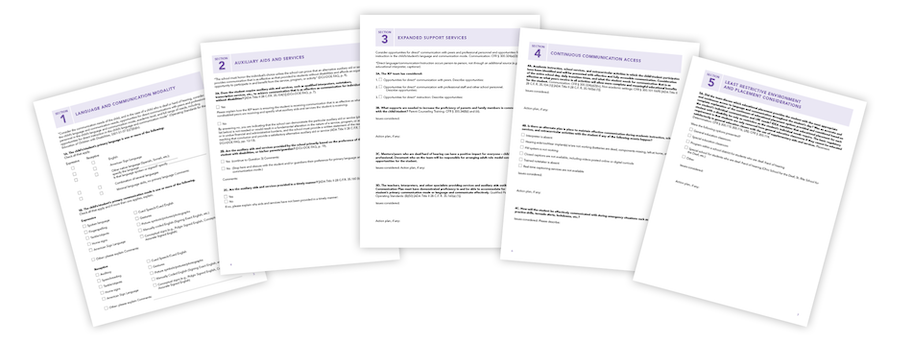Communication Planning Guide for Students Who Are Deaf or Hard of Hearing
Overview | The Communication Plan
Video: Outreach - 09_Tabitha
This video is being reviewed for audio description.
What is Audio Description?
When Audio Description (AD) is enabled, descriptive language narrates what is on the screen. To learn more, visit our accessibility webpage.
Video Player Help
Kaltura Video Hosting: This website uses Kaltura, a video hosting company, to serve video content. If you are having difficulty viewing videos on this site, it may mean that your location (e.g., school district, organization) is blocking or filtering the Kaltura website. Please contact your IT personnel to resolve this issue.
Accessibility: We strive to make this website accessible for all users, including people with disabilities. To learn more visit our accessibility webpage.
Captions / Transcript
After hitting play you can access an interactive transcript for this video by selecting the Show Transcript icon![]() in the top right corner of the video when you select play.
in the top right corner of the video when you select play.
You can turn on captions by selecting the Enable Captions icon![]() in the bottom right corner. Captions can also be turned on by selecting the Settings icon
in the bottom right corner. Captions can also be turned on by selecting the Settings icon![]() , where you can also set your caption preferences.
, where you can also set your caption preferences.
When available, you can use Spanish subtitles for this video by selecting Settings![]() and choosing Spanish in the Captions drop down menu.
and choosing Spanish in the Captions drop down menu.
“It is essential that hard-of-hearing and deaf children, like all children, have an education in which their unique communication mode is respected, utilized, and developed to an appropriate level of proficiency.”
– Deaf Child’s Bill of Rights Act
The Communication Plan is the core of this Guide and is organized into five sections for teams. Careful consideration of each aspect of this tool will allow teams to feel confident as they plan for successful and meaningful communication access for students in the educational setting. Here’s how the sections are divided:
- Section 1: Language and Communication Modality
- Section 2: Auxiliary Aids and Services
- Section 3: Expanded Support Services
- Section 4: Continuous Communication Access
- Section 5: Least Restrictive Environment and Placement Services
